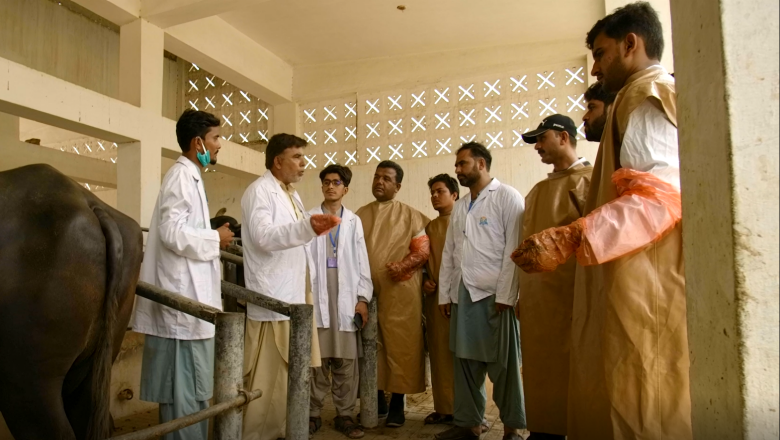Watch the video above on the Sindh Agriculture Growth Project.
“Since SAGP arrived and trained us, the health of cattle and milk production quantity improved. When our incomes increased, our living standards also improved.” – Said Abdul Aleem Soomro, a beneficiary of the Sindh Agriculture Growth Project.
Thousands of people living in rural Pakistan rely on livestock as a main source of income. However, the lack of proper hygiene and cold storage of milk has hindered the growth of the sector.
The ‘Sindh Agriculture Growth Project’ (SAGP)—which is financed by the International Development Association (IDA), the World Bank’s Fund for the poorest countries—is dedicated to supporting the agriculture and livestock sectors in the rural areas of Sindh. SAGP’s livestock sector aimed to improve milk production and better connect small and medium producers to the market.
With assistance from SAGP, farmers are now able to produce more milk that is of better quality. The project also helped connect farmers to by establishing milk producer group (MPG) centers where milk producers can sell milk more easily. Aggregation of production plays an important role in improving market access.
The project, which ran for five years, ended in May, 2021. Overall milk production increased by 28.4 percent and the project directly contributed to increasing the incomes of milk producers.
Milk Chillers to reduce milk waste
The SAGP project supported the establishment of 153 Milk Producer Groups (MPG) benefiting 19,908 people—8,145 of them women-- in 10 districts of Sindh. Those districts were namely Mirpurkhas, Shaheed Benazirabad, Hyderabad, Thatta, Naushehro Feroze, Khairpur, Sukkur, Larkana, Umerkot, and Tharparkar.
Every single Milk Producer Group had access to newly-constructed chiller rooms, milk chillers, generators, and milk analyzers.
Using milk chillers prevented milk from being wasted, enabling farmers to extend the life of each batch in Sindh’s hot climate and ensure that their milk survived the long distances to market. According to milk producer Muhammed Makhan, “The major source of income of the people dwelling here depends on livestock. There are no other ways to earn money. No property, no jobs; only these animals! We used to leave early in the morning for the city and return in the evening. The transportation cost was Rs 200. Most of the time our milk used to get stale because of hot weather. Thanks to these chillers, we can sell milk 24 hours a day.”
Another beneficiary named Ghulam Shabbir Jokhio said, “Earlier, the milk that we used to have was always left at the end of the day. Nobody wanted to buy it in the evening. It would go to waste but now the milk goes into chillers and is also sold in the evening.”

